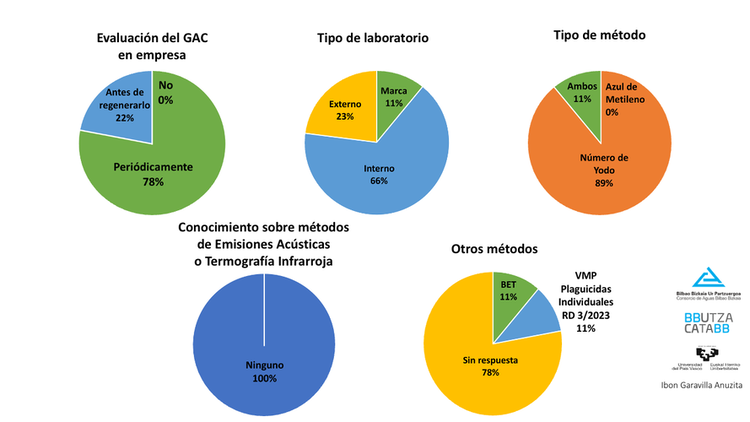The CARBOKIT I project carried out at CATABB has focused on addressing the problem of the progressive depletion of granular activated carbon (GAC) in filtration systems for drinking wáter supply. After an analysis of the state of the art, the absence of specific commercial kits has been noted, leading to consider the Iodine Index and the Methylene Blue Number as alternative rapid methods.
In addition to these conventional methods, research has delved into innovative approaches, such as the application of Acoustic Emissions and Infrared Thermography to assess GAC status. Previous research has also been reviewed, incorporating measurements of COD, DOC and UV254 as monitoring alternatives. At the same time, methods of verification of results by SEM microscopy and thermogravimetry are proposed, in order to guarantee the accuracy and veracity of the results.
As an integral part of the process, a survey has been designed and distributed to companies specialized in filtration systems for drinking water supply. The purpose of the questionnaire is to inquire about the methods currently used by these entities to measure GAC depletion. This initiative seeks to complement and validate the results obtained in the laboratory through the collection of experiences and practices applied in real industrial environments.
The survey shows that all the companies that participated analyze GAC depletion in their plants and most of them do it periodically. In addition, most of them also do it in their own in-house laboratory. The main method used is the Iodine Index and to a lesser extent it is used in conjunction with Methylene Blue. No entity implements or is aware of the alternative methods of measuring Acoustic Emissions and Infrared Thermography; and only 11%, respectively, use other different methods.
Ultimately, this project lays the groundwork for the implementation of Carbokit-II, a laboratory level research phase where the proposed methods will be carried out, thus allowing a comparative evaluation of their efficacy in detecting GAC depletion.


